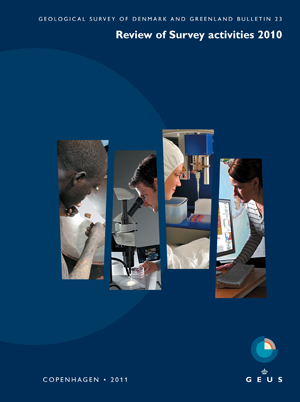Postglacial, relative shore-level changes in Lillebælt, Denmark
DOI:
https://doi.org/10.34194/geusb.v23.4834Abstract
The brackish Baltic Sea and the more saline Kattegat are connected by three straits, Lillebælt, Storebælt and Øresund (Fig. 1). Of the three straits, Lillebælt is the narrowest, with 700 m at its narrowest point, widening out towards the south to around 25 km (Fig. 2). In the narrow parts of Lillebælt, water depths around 30–50 m are common. In the northern part of Lillebælt the depth is 16–18 m and in the southern part the depth is around 35 m. Storebælt and Øresund have played important roles as outlets during the history of the Baltic Sea, and their histories have been much discussed (Björck 1995; Bennike et al. 2004). In contrast, Lillebælt has received little attention. In this paper we present 11 new radiocarbon accelerator mass spectrometry (AMS) ages and propose a curve for Holocene relative shore-level changes in Lillebælt. We use the term shore-level changes rather than sea-level changes because we have constructed both lake-level and sea-level changes.
Downloads
Downloads
Published
How to Cite
Issue
Section
License
GEUS Bulletin is an open-access, peer-reviewed journal published by the Geological Survey of Denmark and Greenland (GEUS). This article is distributed under a CC-BY 4.0 licence, permitting free redistribution and reproduction for any purpose, even commercial, provided proper citation of the original work. Author(s) retain copyright over the article contents. Read the full open access policy.







